different ways to illustrate a children's book
How to illustrate a children's book

Learning how to illustrate a children's book requires its own, unique kind of imagination and artistic process. With a diverse range of story genres, creating the artwork for a children's book could take you in any direction, but the art must remain accessible and attention-grabbing. Plus, with many young children unable to read the words, it should perfectly capture the action in the story.
If this sounds like something you could do but you aren't sure where to start, this guide will give you some expert tips and tricks for illustrating children's books. For more, check out our other illustrating children's books guide and our guide to how to create colourful worlds that tell a story. Also be sure to look at our how to draw tutorials roundup, and our pick of the best drawing tablets around.
But first, read on for this tutorial from illustrator Jim Field.
- Get Adobe Creative Cloud
How to illustrate a children's book: Getting started
I fell into illustrating children's books. I was working as an animation director and a freelance illustrator for seven years, but it became so competitive in the animation industry to win a pitch, and work was drying up.
Then an opportunity came up: I was asked to illustrate a children's book by Peter Bently, a book called Cats Ahoy! published by Macmillan books in 2011. This book ended up winning the The Roald Dahl Funny Prize, and changed my career path as a result.
01. Look at reference
I look at lots of reference when I'm working on a book. Inspiration might spring from a trip to a national park, a wildlife documentary, a film, or other illustrators' and artists' work.
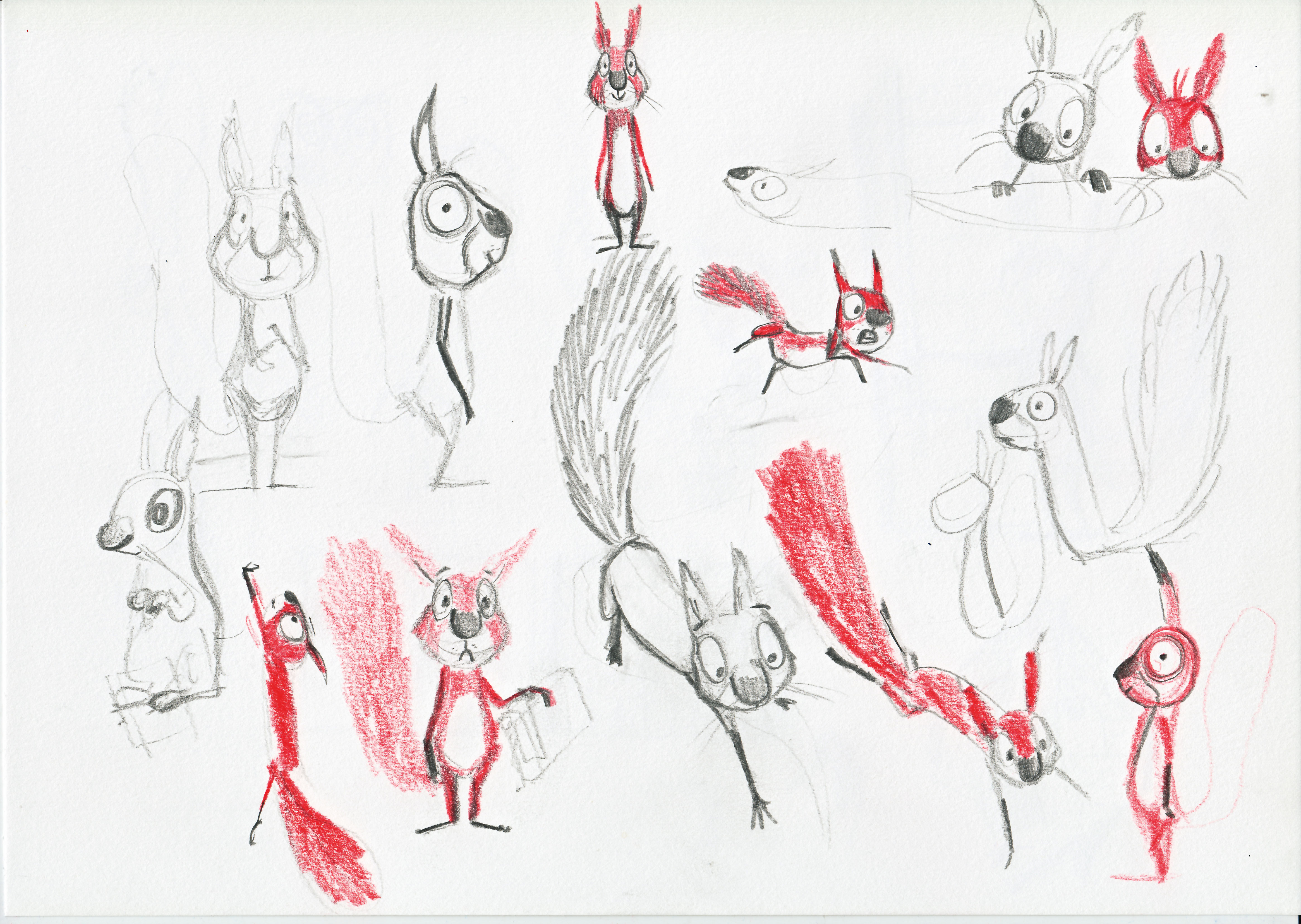
These things all help inspire my work. Sometimes I'll find a reference photo of a landscape that inspires a composition, or it might be the dramatic lighting from a movie I've seen that helps me develop lighting in a composition.
I gather lots of reference images from Pinterest that help me create a mood board for each book I'm working on. I refer back to these frequently throughout the process, so my head stays in the same place.
02. Mix analogue and digital
I have a 2017 MacBook Pro 15-inch connected to an LG 27UD88 monitor. I also use a Wacom Intuos5 Pro tablet. I use Photoshop for all of my final digital artwork and use a lot of Kyle T Webster's brilliant Photoshop brushes – varying the opacity and flow to create different textures.

I hop between digital artworking at my standing desk and a lightbox for the hand-drawn elements. For the final artwork, the main characters and overall background layout are hand-drawn in pencil. I've tried to draw directly on the computer but it never has the same feel as by hand, it loses the energy and spontaneity.
My goal when artworking is to make my illustrations look as hand-painted as possible. I want to avoid them looking digital, so I avoid filters and limit my use of gradients and obvious blending mode effects where possible.
03. Map the story
When I read a story for the first time, it plays like a movie in my head. Coming from an animation background, I 'stage' the story, following the same process as I would for an animated film.
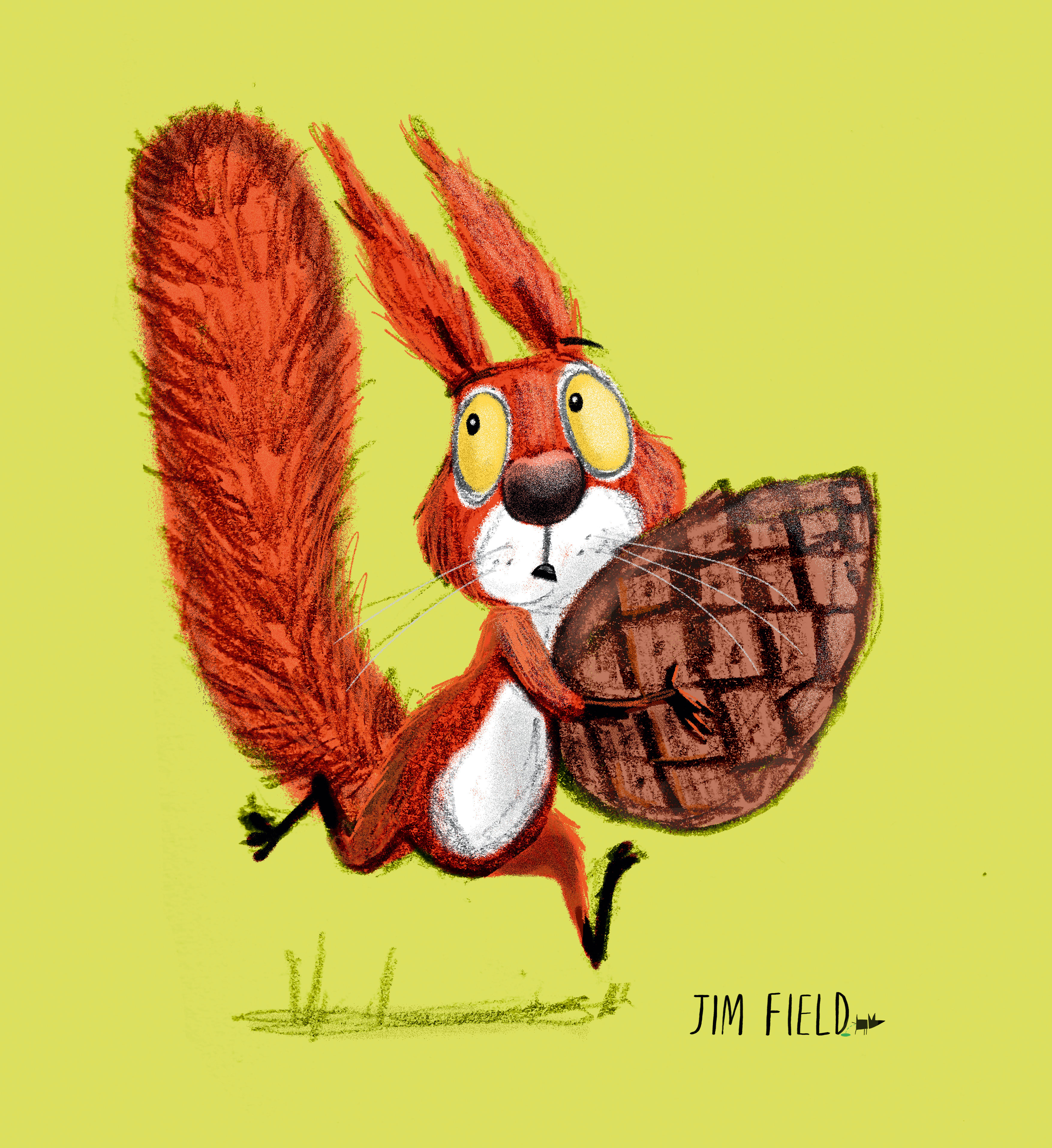
The Squirrels Who Squabbled by Rachel Bright is about two squirrel characters, who are intent on having the last pine cone of the season; each will do anything to get it. Cyril, our 'hero' character has partied his way through the season and has no food left. Bruce the 'anti hero' has planned ahead and has a mountain of bounty for the winter, but still feels he must have the last pine cone.
04. Create thumbnails
I always start with a sketchbook and pencil. While reading the story over and over to myself, I make lots of character doodles and sketch out thumbnail ideas. Some compositions come to me straight away; I know exactly how I feel they should be, and they rarely evolve much in terms of composition. Some, however, are very tricky and can take a long time to get right.
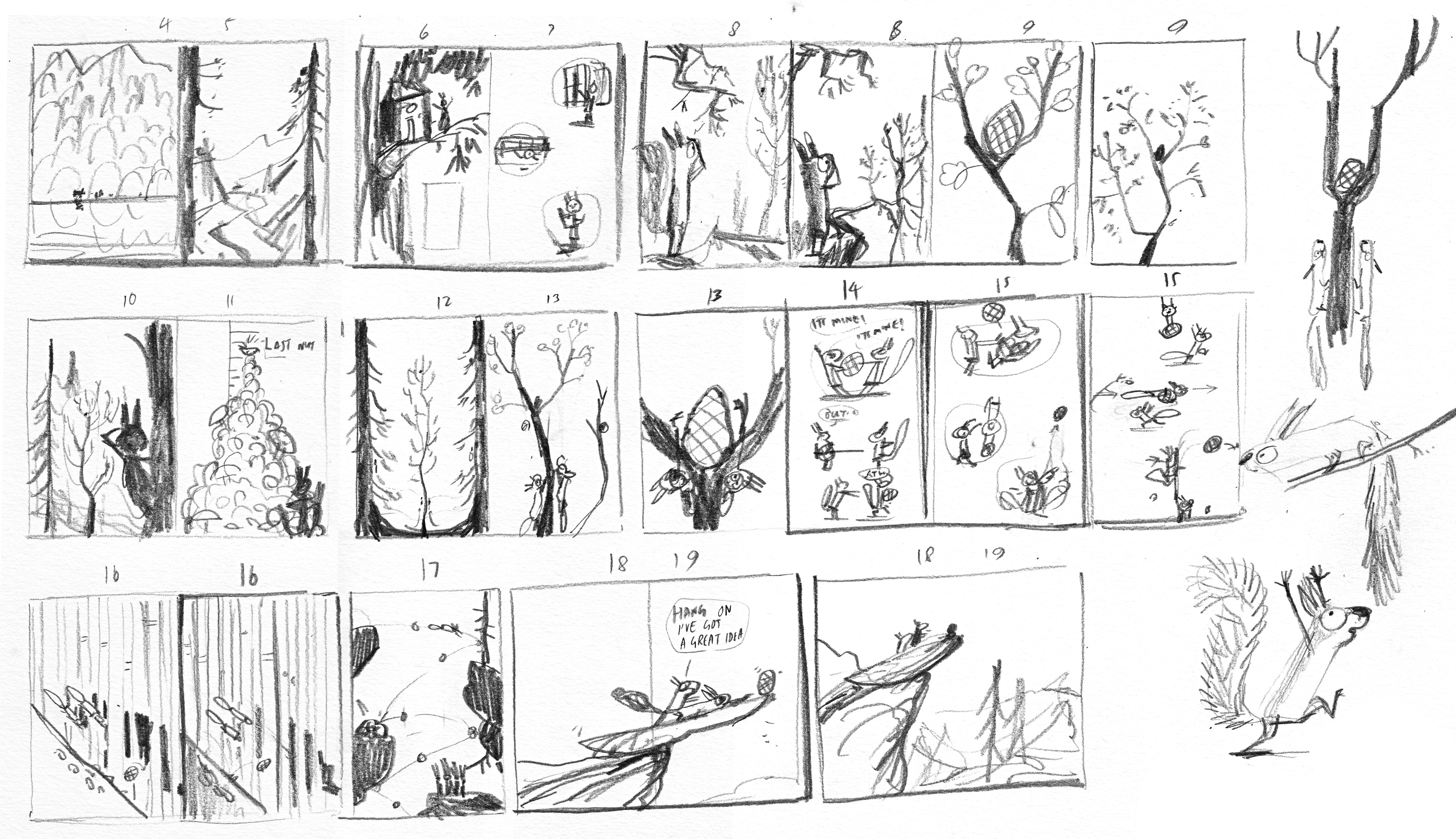
Once I've built up a collection of thumbnails, I'll then drop the best ones into InDesign with the text, so I can get more of an idea of how the book is flowing. Once I'm happy, I'll share this document with the team for feedback.
Getting the thumbnails right at this point is essential. They are the backbone structure of the book. If there are flaws in the visual storytelling here, then making it pretty in colour at the final stage will be a waste of time.
05. Make roughs
Once we're all happy with the thumbnails, I work them up to roughs, again working in pencil and paper. I then start introducing colour in photoshop. it's at this stage that I start to get more of a feel of the finished book.
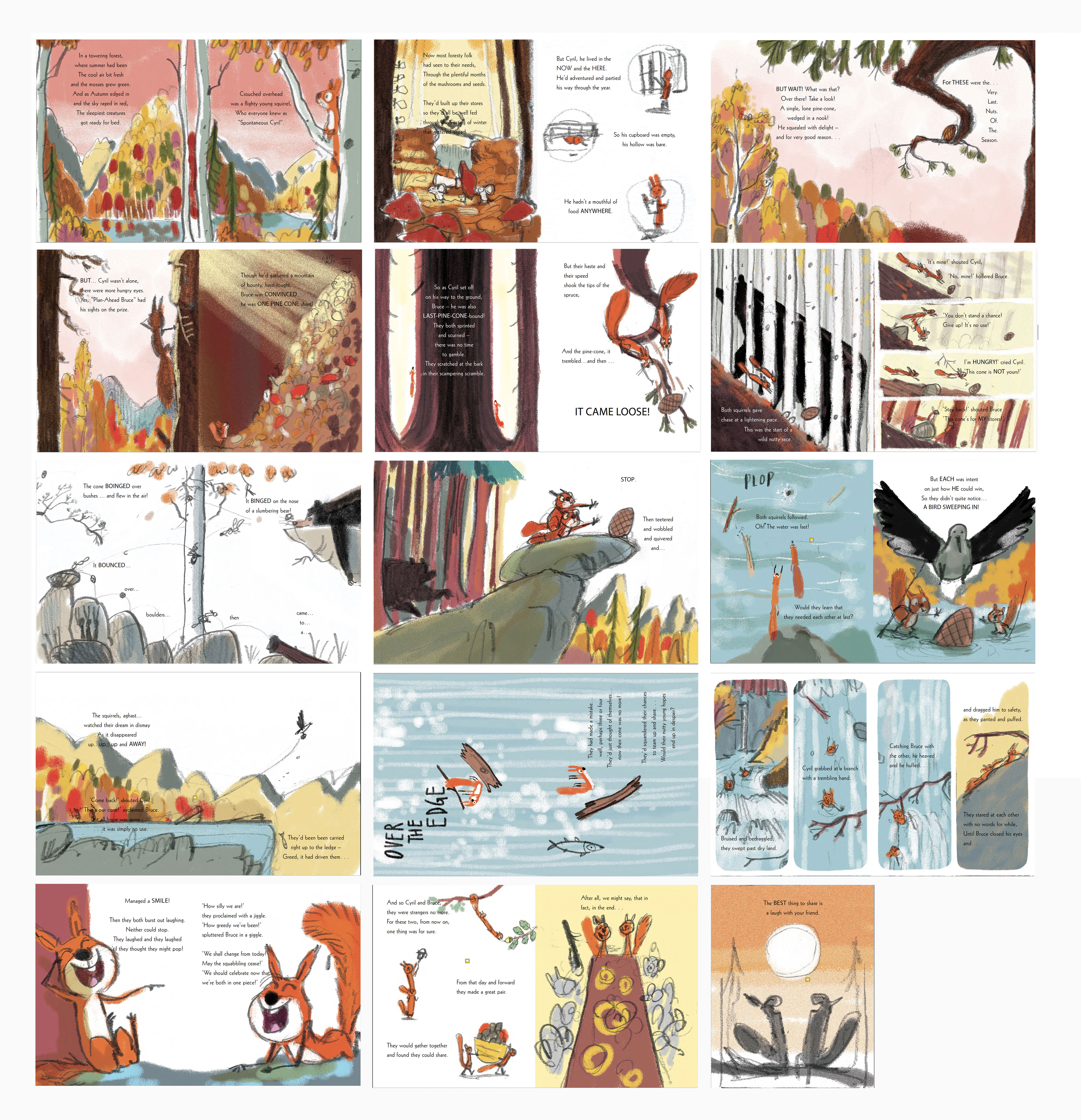
Choosing the right colour palette for a book is something I always find quite a challenge. The Squirrels Who Squabbled is set in the last days of autumn, so I wanted lots of lovely oranges, reds and browns soaked in sunshine.
At this point, I also start to think about the lighting in each spread, sketching in the shadows, so I can be consistent with the direction of the sun from scene to scene when it comes to the final art stage. These elements give the illustration a greater sense of realism.
06. New challenges
This spread in the book (see the gallery below) is a turning point in the story. My art director Grahame Lyus suggested we make it a vertical spread, to make it work better with the action and better suggest the turn of events to come for the characters.
Image 1 of 3

Image 2 of 3

Image 3 of 3
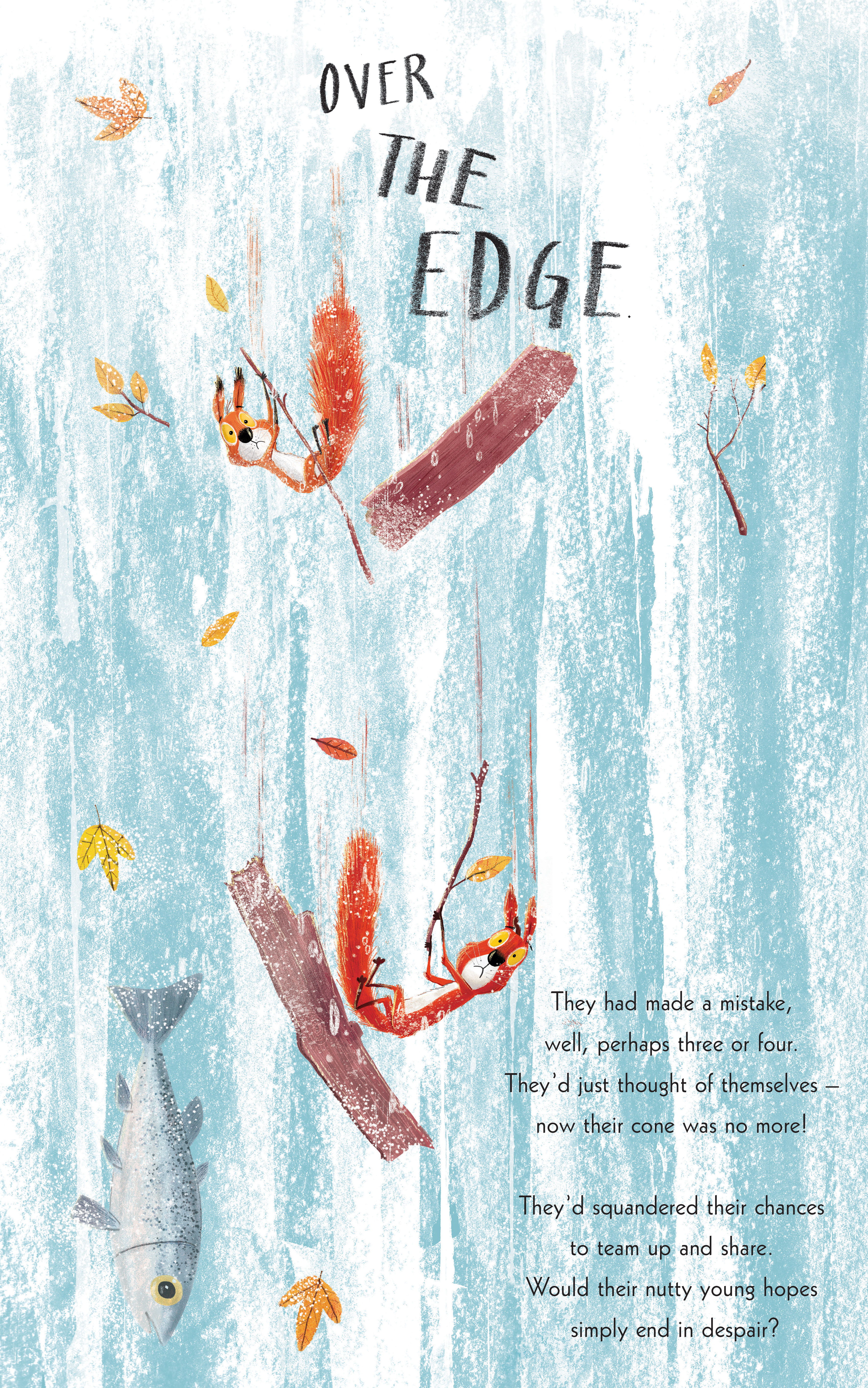
I think this stems from my animation background, but I see a picture book as the best 24 images from a film. Each page must bring the text to life, communicate the story and I try to bring something else to the story visually. Each book is a new challenge to develop myself further as an artist.
This article was originally published in Computer Arts magazine in 2018.
Related articles:
- Best drawing tablets for kids: Get your little one drawing digitally
- Adobe Illustrator tutorials: Lessons to boost your skills
- Illustration vs photography: how do you decide?
Jim Field is an award-winning illustrator, character designer and animation director, who has worked on a variety of projects, from music videos and title sequences to advertising and picture books. His first illustrated picture book won the Roald Dahl Funny Prize in 2011; since then he has illustrated over 40 children's books.
Related articles
different ways to illustrate a children's book
Source: https://www.creativebloq.com/features/how-to-illustrate-a-childrens-book
Posted by: garciathervice.blogspot.com

0 Response to "different ways to illustrate a children's book"
Post a Comment